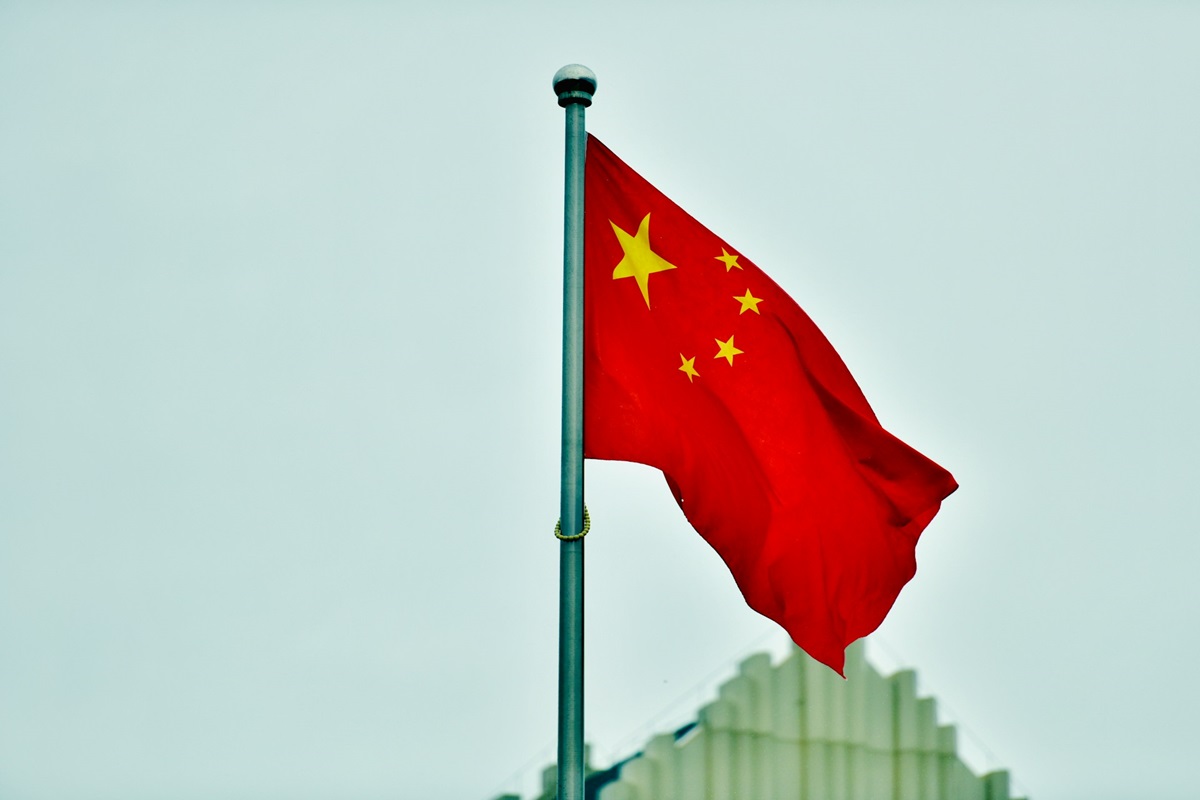In the space of China’s economic system, which is currently the second largest in the world, an unexpected decision by the financial authorities was recorded in the form of lowering borrowing costs.

Currently, the mentioned system exists within the framework of circumstances generated by not the best period of its history. Beijing faces a clear and largely visible need to stimulate economic growth, which is nowadays recorded as a nominal fact, but in terms of scale and level of intensity falls into the category that can be characterized as insufficiently dynamic. Last week, the leadership of the Asian country discussed the condition of the economy and considered possible scenarios for the impact on its development. The meeting of China’s top policymakers did not result in any announcements about short-term incentives to ensure higher figures for economic growth. Against the backdrop of this outcome of the specified discussions, disappointment was recorded on the part of investors who expected Beijing to make decisions on the implementation of measures to support the second largest economy in the world, the progress of which is uneven and in a symbolic sense can be described as a road with bumps.
At the same time, the current week, from the point of view of the processes taking place within the economic policy of the Asian country, began with unexpected news. On Monday, July 22, the People’s Bank of China announced cutting the seven-day reverse repo rate, a key short-term policy rate. This decision by the Asian country’s financial regulator is the first such decision in almost a year. In the shortest possible time, lenders responded to the mentioned change in the monetary policy of the People’s Bank of China. Local financial institutions cut their main benchmark lending rates. This decision in a practical sense means that the process of borrowing for mortgages and other loans in the Asian country has become less costly.
It is worth noting that the scale of lowering interest rates by the People’s Bank of China is moderate. At the same time, the very fact of this decision is evidence that Beijing is aware of the need for new measures to support the economy. It is possible that lowering borrowing costs is the first stage of a larger effort. At the same time, this is just an assumption, the materialization of which is not the only possible scenario of the foreseeable future. It is worth noting that the world’s second-largest economy is on an upward trajectory, but the dynamic of its movement up the scale of indicators is showing a slowdown. In the second quarter of the current year, China’s economic growth was recorded at 4.7%. This result reflects the tendency of the mentioned process to slow down. In the first quarter of 2024, the Asian country’s economy showed growth of 5.3%.
Last week, a document was published containing the economic development plan of the head of the People’s Republic of China, Xi Jinping. The plan provides for technology to be a central element of the Asian country’s economic future. Moreover, the Chinese leadership admits the possibility that economic growth will slow down shortly.
Vey-Sern Ling, a managing director at Union Bancaire Privee, says that the initiatives and decisions of the Asian government are a good sign. According to the expert, China’s leadership is trying to support the economy, although the fundamental impact is likely to be limited.
China’s CSI 300 Index of onshore shares dropped as much as 1.1%. The yuan weakened 0.1% against the dollar in offshore trading. The Hang Seng China Enterprises Index of Hong Kong-listed stocks rose 0.8%.
The Third Plenum meeting was held in the Asian country last week. The corresponding meeting is held twice every ten years. The results of the plenum confirmed Beijing’s desire to refrain from large-scale measures to stimulate the economy. Currently, the Chinese leadership intends to reorient growth factors from sectors of the economic system fueled by debt such as real estate to others. Xi Jinping has unveiled plans to assist indebted municipal governments.
From the point of view of China’s economic prospects, a significant constraint on intensive progress is currently the crisis in the real estate sector, which, contrary to more optimistic initial expectations, has been going on for several years and is gradually transforming into a systemic-structural problem. Officials in the Asian country have so far shown little enthusiasm for implementing measures aimed at boosting demand or stopping the fall in property prices. At the same time, the crisis in the mentioned sector continues to be a factor of sensitive impact on the condition of the second-largest economy in the world.
It is worth noting that the measures approved as an action plan at the plenum, and the specified rate cutting, which amounted to 10 basis points relative to the previous indicator, cannot be characterized as the breakthrough that the market is hoping for. At the same time, Beijing’s corresponding decisions, despite their moderate scale and inconsistency with the concept of radical reform, are still a move in the right direction in terms of the conceptual content of the vision of the strategy for stimulating the economy. Also, the actions of the Chinese leadership signal that officials understand that it is necessary to take quick measures.
Julian Evans-Pritchard, head of China economics at Capital Economics, said Monday’s interest rate cut gives some confidence that the Asian country’s policymakers are responding to the loss of momentum. In this case, an economic impulse is implied. Julian Evans-Pritchard also said that the heavy lifting will need to come from fiscal rather than monetary policy.
For the last time, the People’s Bank of China lowered the seven-day rate by 10 basis points in August, along with cutting the one-year benchmark rate. Since then, the financial regulator has been restricted in its ability to further ease monetary policy amid pressures associated with the depreciation of the national currency.
Cutting the seven-day rate from 1.8% to 1.7% on Monday is likely to limit the impact on loan demand. This opinion is shared by Morgan Stanley economists including Robin Xing. They expressed their view in a note published on Monday. They said the decision announced on Monday reflected the reactive nature of the easing. They also talked about risks to their forecast for China’s 4.8% economic growth implementation in 2024 in a related context.
A communique issued last week after the plenum stated that the Asian country’s leadership is committed to achieving its economic growth target of around 5%. It is worth noting that this goal was first set by the Chinese authorities in March. At the same time, given the lack of a decision on the implementation of large-scale measures to stimulate economic growth, stock buyers did not demonstrate enthusiasm for the specified communique.
A more detailed plan of action by the Chinese leadership, also released last week, contains a statement of intention to make moves aimed at strengthening the finances of municipal authorities. In this case, a solution is provided such as shifting more revenue from the central to local coffers. It is possible that this intention may become an incentive for officials to increase consumer spending. It is worth noting that any impact on consumption will likely take time.
The current economic reality facing Beijing is its longest streak of deflation since 1999 with prices on a downward trajectory for five straight quarters. This means that real interest rates, which adjust for changes in the cost of goods and services, remain high, weakening any modest easing.
Also, expectations among experts are currently increasing for additional easing of monetary policy by the People’s Bank of China in the coming months. This vision is largely due to numerous predictions that in September in the United States, the Federal Reserve will begin a cycle of lowering borrowing costs. The corresponding action by the US central bank is expected to narrow the interest rate gap between the two countries and ease pressure on the yuan. The implementation of the corresponding scenario will provide the People’s Bank of China with expanded space for action in terms of possibilities for changing monetary policy.
Also realistic is the prospect that before the end of the current year, the Asian country will decide to reduce the required reserve ratio, which is the amount of cash that lenders must set aside.
Moreover, it is possible that the People’s Bank of China will make a new decision to ease monetary policy as early as August. There is also a high probability that the corresponding decision will be made in September. This assumption is based on the fact that a large amount of one-year policy loans will mature and could be replaced by the liquidity unleashed by an RRR cut.
Also on Monday, the People’s Bank of China announced cutting two more interest rates, which are ceiling for borrowing costs. The one-year loan prime rate was lowered to 3.35% from 3.45%. The five-year loan prime rate was reduced to 3.85% from 3.95%.
The cut of the seven-day rate could intensify the Asian country’s financial regulator’s months-long struggle to protect government bond yields from falling further. The continuous rally in prices for the mentioned bonds has caused the People’s Bank of China to worry about financial stability, has become a factor of pressure on the yuan, and is the reason for the pessimistic perception of the long-term prospects for economic growth of the state.
The Asian country’s 10-year government bond yield fell two basis points to 2.24% after news of lower borrowing costs emerged on Monday.
The People’s Bank of China has also allowed lenders to apply for a reduction or exemption of collateral requirements for receiving its one-year policy loans. Societe Generale SA economists including Wei Yao suggest that the mentioned decision could help reduce demand for long-term government debt from commercial financial regulators and dampen the rally in bond prices after lowering borrowing costs.
Traders will be keeping a close eye on any potential moves by the People’s Bank of China in the bond market. The focus of attention comes as the Asian country’s financial regulator has pledged to borrow and sell sovereign notes if yields continue to be on a downward trajectory.
Experts interviewed by the media say the current 10-year yield of the Chinese bond at a level of 2.25% is a red line for the local central bank.
It is worth noting that the seven-day rate is seen as the future benchmark policy rate. The People’s Bank of China has signaled a move to short-term rates over the past few weeks to guide markets. As part of this approach, the Asian country’s financial regulator could begin to take actions that would be more in line with the strategies of other central banks, such as the Federal Reserve. Also, against this background, the importance of the one-year benchmark known as the medium-term lending facility rate will decrease.
Lowering borrowing costs is likely to increase pressure on the yuan as the Fed has yet to begin easing monetary policy. Serena Zhou, senior China economist at Mizuho Securities Asia Ltd., said the Asian country’s financial regulator may have to take action to support the renminbi exchange rate.









